We spent one night at a lodge named Relais du Masoala in Maroantsetra before catching the boat to Masoala. The first part of this post shows a handful of herps I came across on the grounds of this lodge.
Here's the view from the open-air restaurant/lounge at Relais du Masoala.
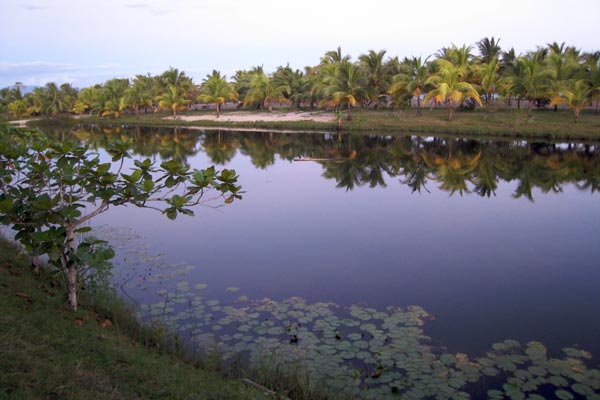
Across the stream we saw a few skinks rustling about in the fallen palm fronds. They were hard to approach, and I only got fairly ambiguous photographs like the following one. It could be Mabuya elegans but I think it's probably Mabuya gravenhorstii, the same species we had seen at Ranomafana.
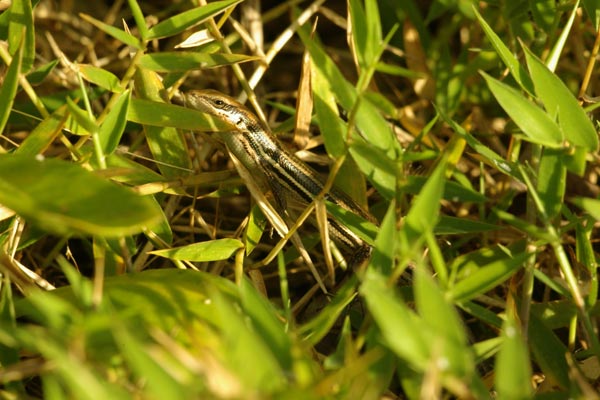
There were at least two types of "house geckos" residing on the walls of Relais du Masoala:
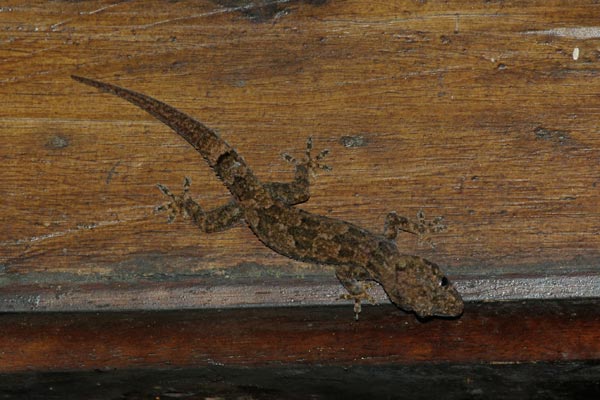
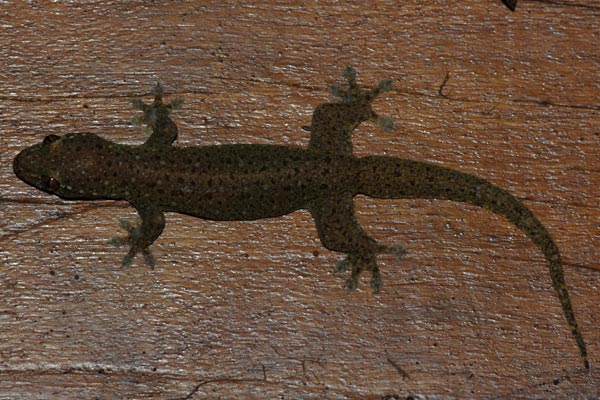
After dinner we found several frogs in the small plants around the lodge, and later on I found many more in the palm fronds across the water. At the time I thought there were at least three species involved, but after studying my photographs I've decided that they were all Heterixalus madagascariensis, a species that's typically found near water in cultivated or otherwise non-forested areas. They're distinguished by their yellow and orange highlighting, along with a few other features.
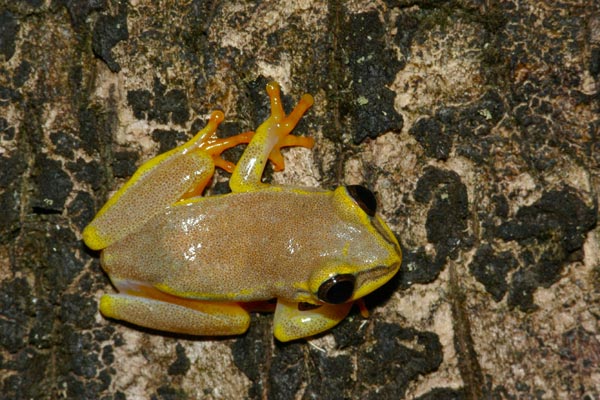
At the lodge just before dinner we met Armand, who was to be our forest guide at Masoala National Park. He asked us what we were most interested in seeing, and we gave our traditional response: "lemurs, reptiles, and frogs". Armand said that there would be no problems finding these animals, except for snakes. Snakes were very difficult to find, he said.
When we walked back to our room after dinner, we saw this guy waiting for us on the deck, apparently mocking Armand's words. This is a common species, but we hadn't yet seen one.
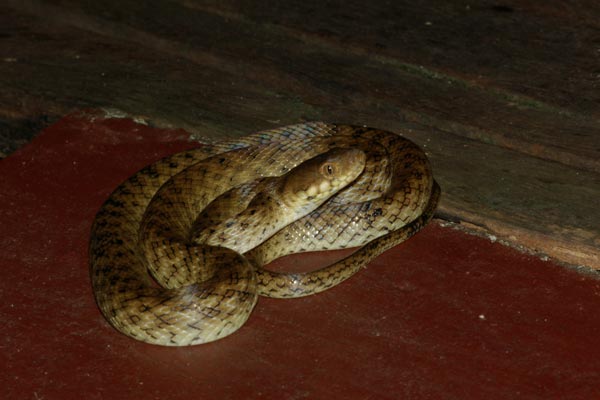
The next morning we took a bumpy van ride to a makeshift dock, boarded a small speedboat, and headed across the Bay of Antongil to Masoala National Park. This bay contains the island Nosy Mangabe, a wonderful destination in its own right but one that we couldn't squeeze into our itinerary on this trip. We pulled up onto this beach and met some of the workers at the Chez Arol lodge where we were to stay:
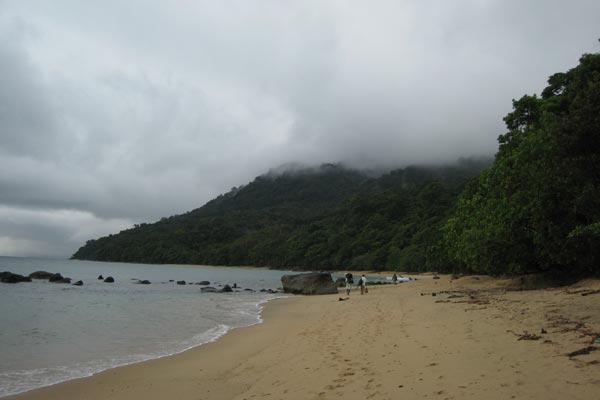
Chez Arol is a small collection of local-style huts a few dozen yards from the beach. They are primitive in most ways, but the newer ones in which we stayed had bathrooms with flush toilets and running water. It turns out that such bathrooms are very attractive to the local fauna.
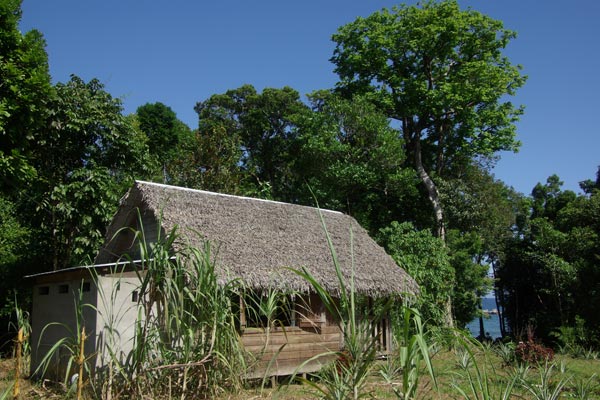
After a morning hike in which, just as Armand had warned us about, snakes were not to be found, we returned to Chez Arol for lunch. We took turns washing our hands in the bathroom sink of my sister's hut, and I went last. When I turned around I saw this charming snake draped across a ledge across the doorway between the bathroom and the main room. This snake reminded me of a large coachwhip in its size, shape, and lack of desire to sit still for photographs. I couldn't get any full-body photos, but fortunately for me we saw another one later on, at Anjajavy.
These snakes have yellow heads and dark red tails, with the color shifting about a third of the way down the body. This coloration has led to a legend that the snakes hang in trees tail-down, and drop down to impale unsuspecting people with their tails. In reality they just slither away really quickly when you try to take their pictures.
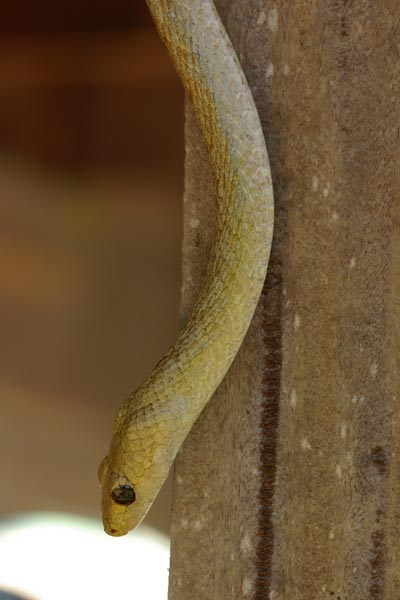
That evening we went out for a night hike, in which, apparently as usual in this forest, no snakes made an appearance. After dinner at Chez Arol, while walking the short distance back from dinner to our huts, my flashlight passed across this fellow a foot or two away. We were beginning to get the impression that snakes weren't so difficult to find after all, as long as you don't look for them in the actual forest.
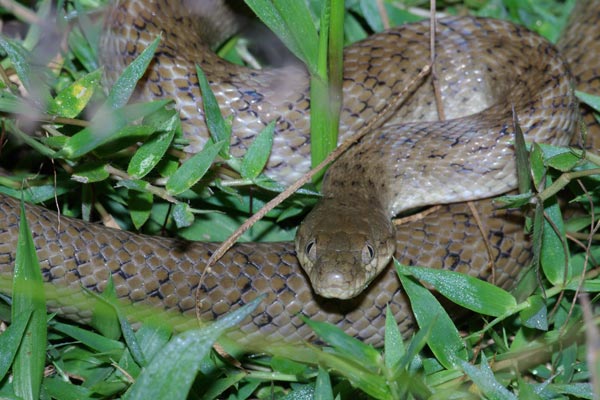
The next afternoon we walked over to a local village that's very close to Chez Arol to look for Panther Chameleons in the trees. As we were strolling by, I glanced at a nearby tree and saw this lovely boa coiled up in the branches. At this point I think even Armand was willing to admit that snakes were not especially difficult to find.
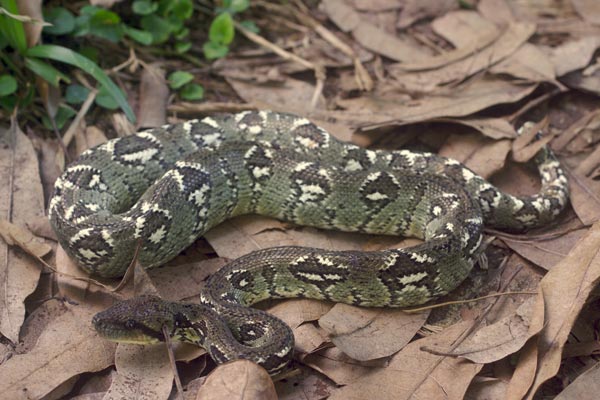
On to the lizards. I'll start with the standard Zonosaurus madagascariensis, which was quite common here as it was in several other places we visited. There were some nice color variations here though. We saw a few with very greenish stripes instead of the traditional yellow/off-white:
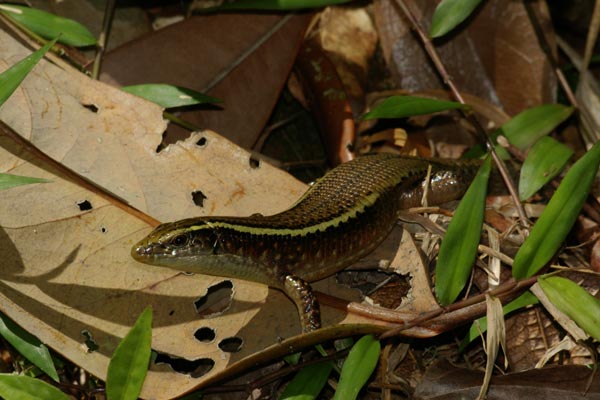
We also saw this huge individual with a bright red-orange belly, which I didn't notice on any other individuals. Glaw & Vences don't mention this coloration at all. Henkel & Schmidt's "Amphibians and Reptiles of Madagascar" say "only animals from Ile Ste.-Marie have a red underside," which seems demonstrably false. Males of another large Zonosaurus, Z. laticaudatus, have red throats, but the separated prefrontal scales and the stripes beginning on the back of the head (rather than behind the head) mark this as Z. madagascariensis rather than Z. laticaudatus. So apparently this is notable sighting.
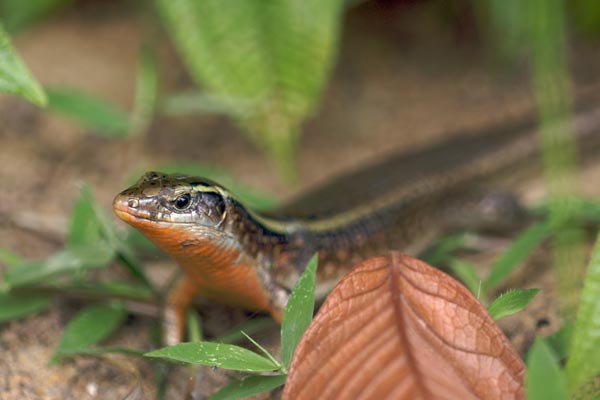
We also saw a number of individuals of the much smaller Zonosaurus brygooi. These weren't any bigger than large U.S.-style skinks. The next picture is a baby; the following one is an adult.
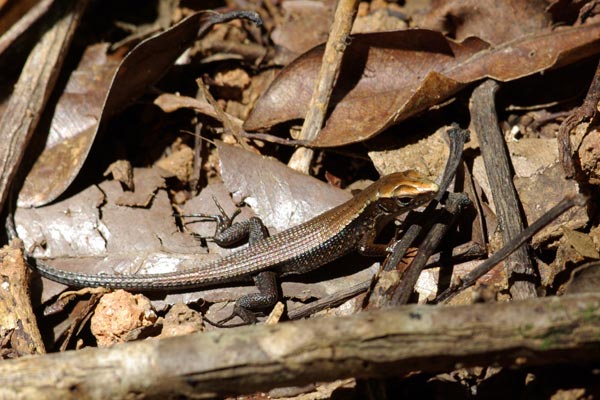
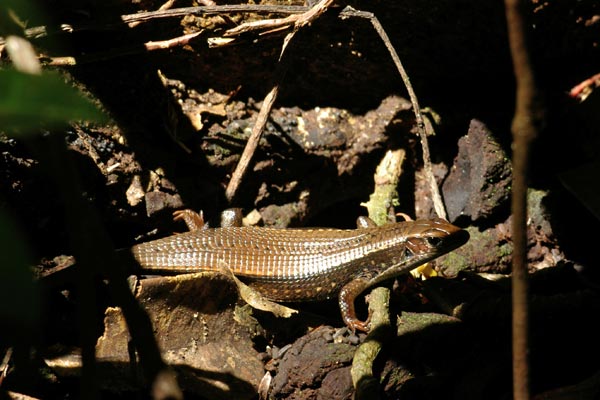
This photo wins the prize for "worst Madagascar photograph that I didn't delete". It was the only photo I managed to get of the robust Geckolepis maculata. This one was living on the walls of my sister's hut (quite the herp hotspot). I saw it while trying to photograph the bathroom snake, and after I got this one super-awful photo it skittered away, and I never saw it again despite numerous searches.
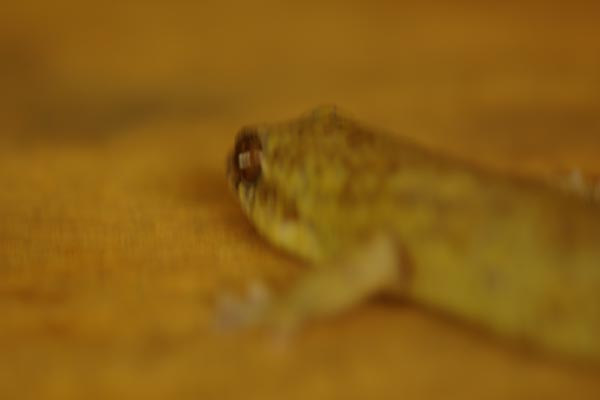
Here's one of our Phelsuma friends that we had already seen in other locations. I watched this one prowling around on a Ravenela palm for about half an hour one afternoon, between forest hikes.
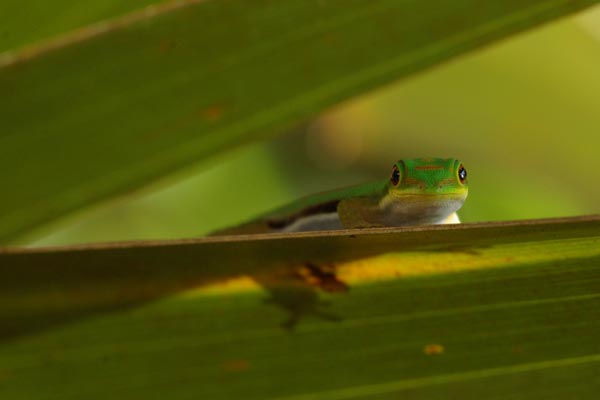
While watching the P. l. lineata, I noticed that one of the green geckos was clearly some other type. It was much more skittish than the others, and it took me a long time to maneuver into a position where I could get a decent photograph. I'm glad I spent the time though, because it turned out to be the only P. quadriocellata bimaculata that I saw on the trip. According to Glaw & Vences, this subspecies is distinct enough that it's sometimes regarded as a full species.
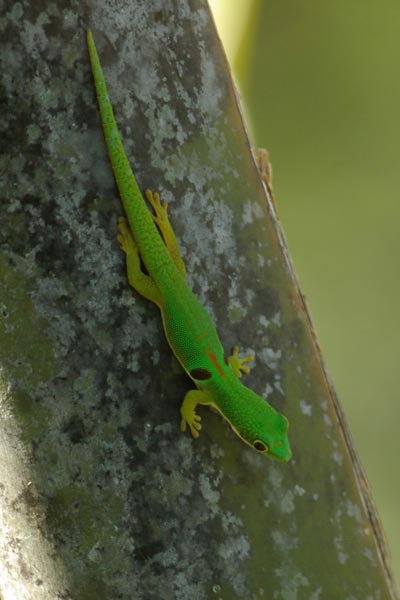
The third and final type of Phelsuma we saw at Masoala was the largest species in this genus, Phelsuma madagascariensis. The ones here are the nominate subspecies P. m. madagascariensis.
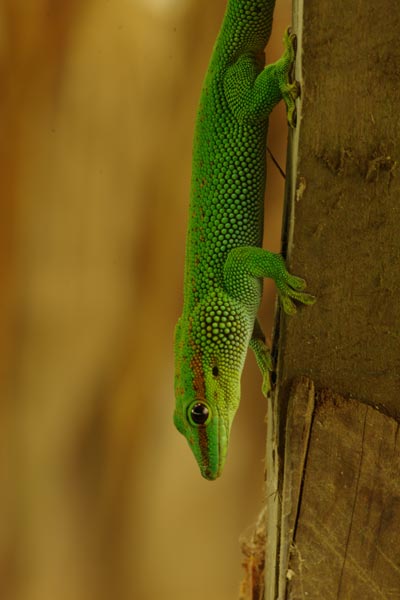
We went out looking for wildlife on both of the nights that we were at Masoala. The first night was something of a bust though; we saw just a handful of frogs and one Brookesia, no geckos or lemurs or anything else interesting. Armand blamed the cheap batteries he had just purchased for his headlamp. We were skeptical, and thought maybe he just wasn't as good as our earlier guides at finding the nocturnal animals. The second night, my sister gave him some extra high-quality batteries for his headlamp. Sure enough, we had an amazing night, seeing a wide variety of lemurs, frogs, chameleons, geckos, and other animals. So I guess those cheap batteries were to blame after all.
We were looking forward to seeing some more leaf-tailed geckos, and on this magical second night, we found four of them, each more large and cryptic than the last. Here's one in the traditional head-down resting position, and another one in an active pose:
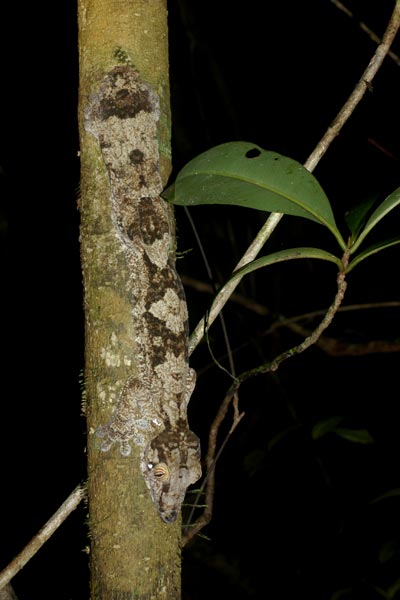
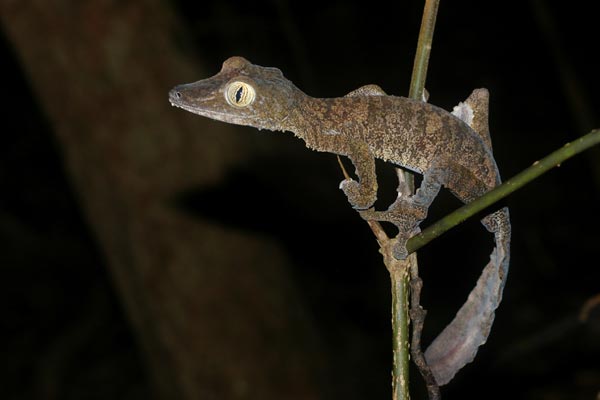
Between Uroplatus numbers three and four, Armand also found this beautiful gecko a few feet up on a small tree trunk. Armand managed to worry it down to just a foot or so off the ground for this photo:
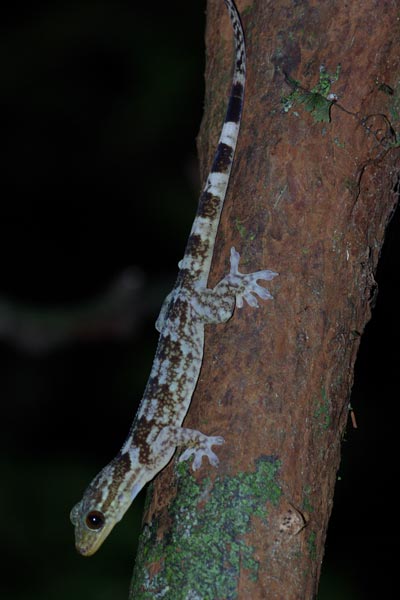
While I was photographing our new Homopholis friend, I turned my head and saw yet another gecko species (and genus) a few feet away. This one is essentially terrestrial, basically your Madagascar equivalent of Coleonyx:
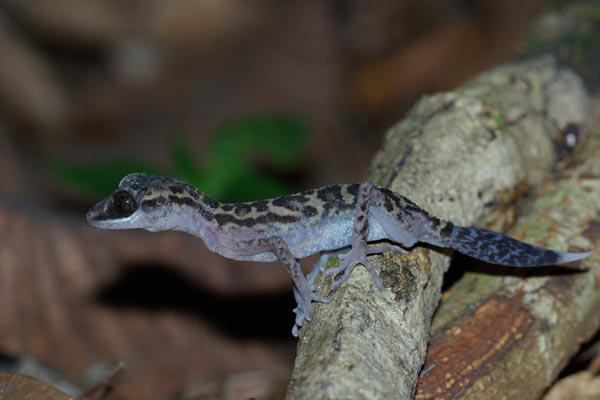
We saw four species of chameleon sleeping on that same night. First up was the same Brookesia species we had seen at Ranomafana:
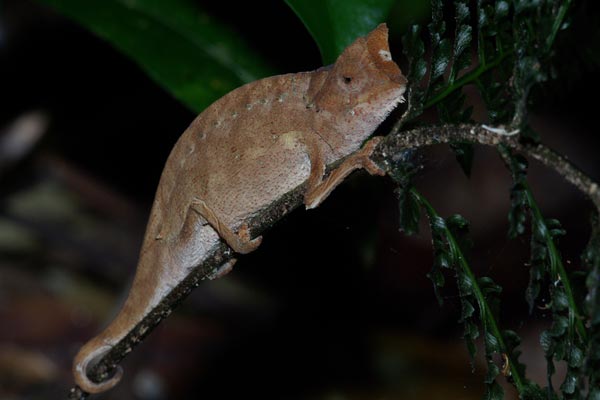
Armand's amazing trick of the evening was locating two Brookesia peyrierasi, each one about three inches off the ground on a tiny twig. These are nearly the smallest vertebrates in the world. Brookesia minima (from which this species was split) is slightly smaller, and a couple of recently-discovered Sphaerodactylus geckos from the Caribbean are slightly smaller still, but that's about it. You just don't get much smaller and still have a backbone. And these two were about twenty feet off of the trail when Armand found them.
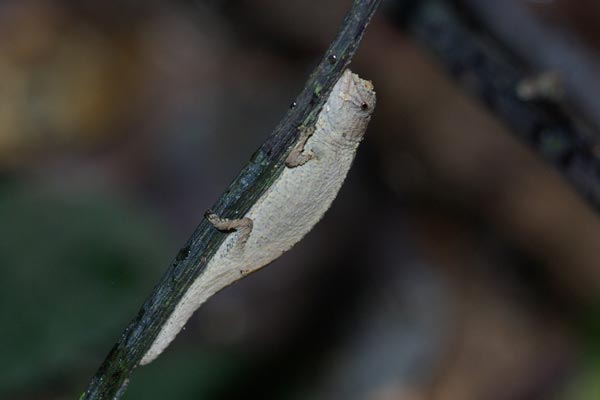
The third sleeping chameleon of the evening was our old friend Calumma nasuta:
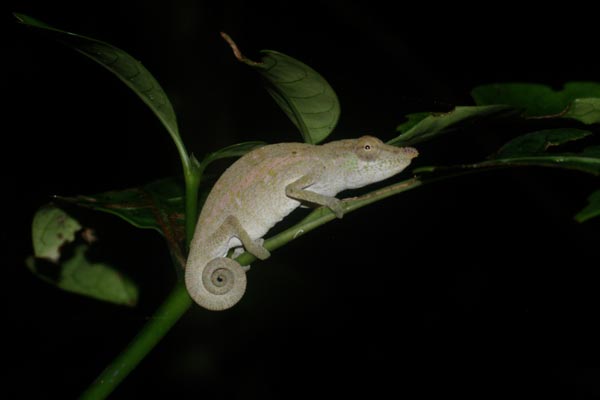
And the final sleeping chameleon was a large species new to us at Masoala, Calumma malthe. However, I didn't get any photos of it at night because it was in an awkward location and I didn't feel the need to disturb it since we had seen the very same individual earlier in the day. Here it is from our daytime encounter:
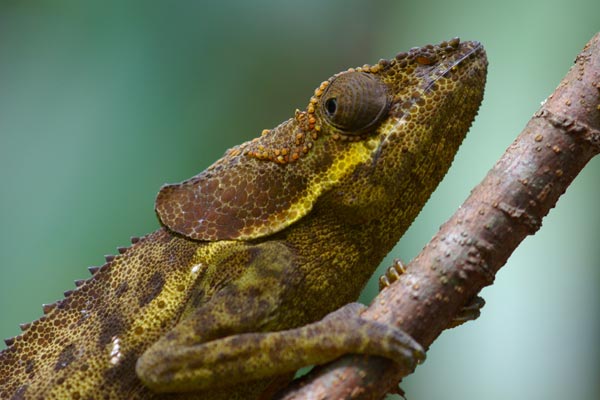
The last type of chameleon we saw at Masoala was the Panther Chameleon, which as you might recall we were looking for when I saw the tree boa. We did indeed see this one in the village just next to Chez Arol. Though not colorful, it was still a beautiful chameleon. (Don't worry, we saw some extremely beautiful ones later on.)
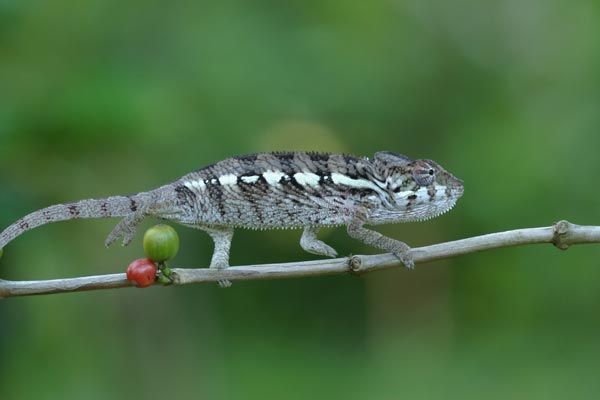
That's it for the Masoala lizards, so it's time for the parade of Masoala frogs. To get you in a froggy mood, here's a little waterfall that was a short hike from Chez Arol.
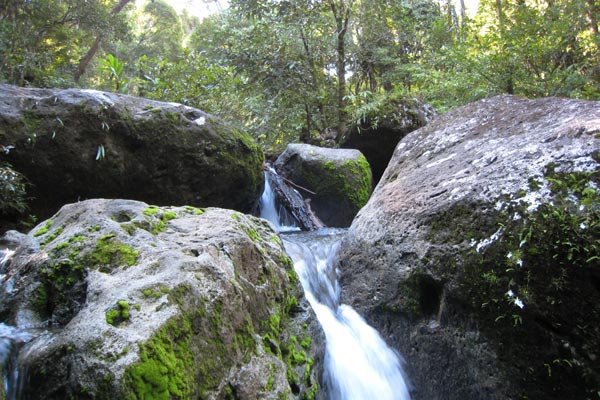
The frog Ptychadena madagascariensis was common here as it was in several other locations we visited. Still a fine-looking frog though.
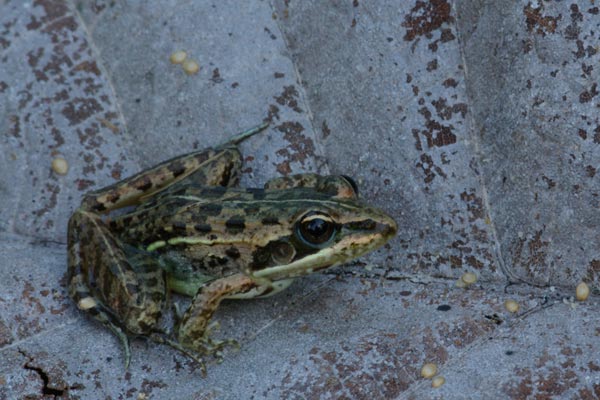
Here's another old friend from Ranomafana, Aglyptodactylus madagascariensis. These were the most commonly seen frogs in the Masoala forest. The first photo is a full-sized adult, and the second photo is a small one. Note that they look very similar to each other. This throws some doubt on my earlier tentative identification of one of the smaller frogs from Ranomafana, since that one looked significantly different from the large A. madagascariensis that I saw there.
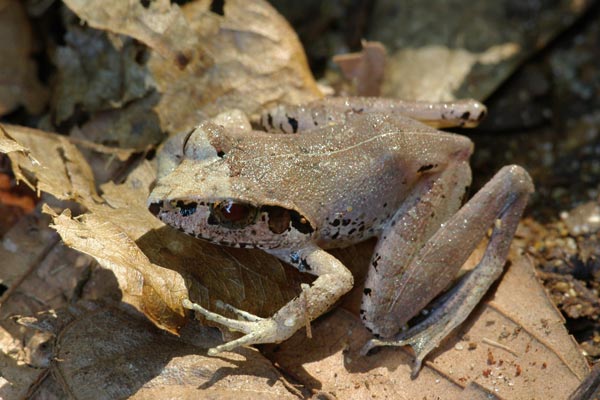
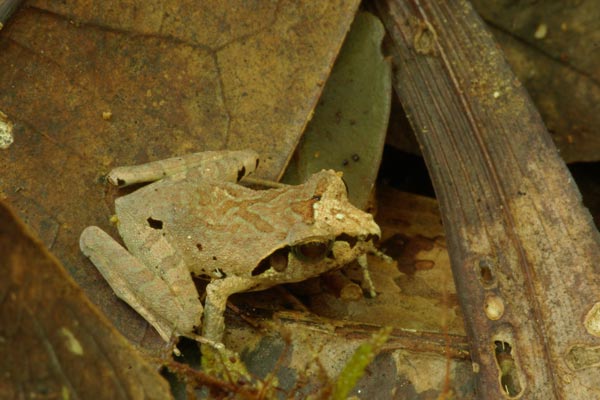
The most distinctive aspect of Mantidactylus boulengeri is that it has toad-like tuberculate skin that nearly always appears to be dry. I think that the next three frogs are all M. boulengeri but I wouldn't be surprised to discover that I'm wrong.
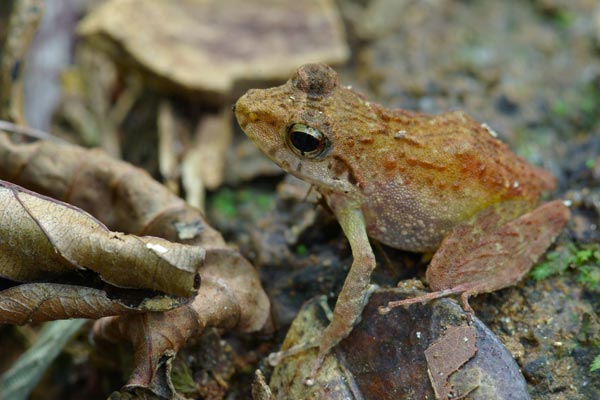
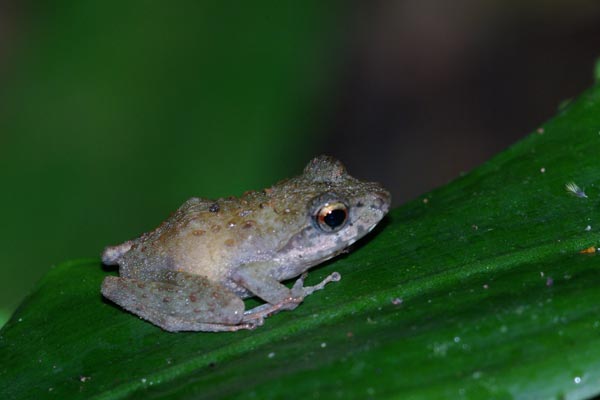
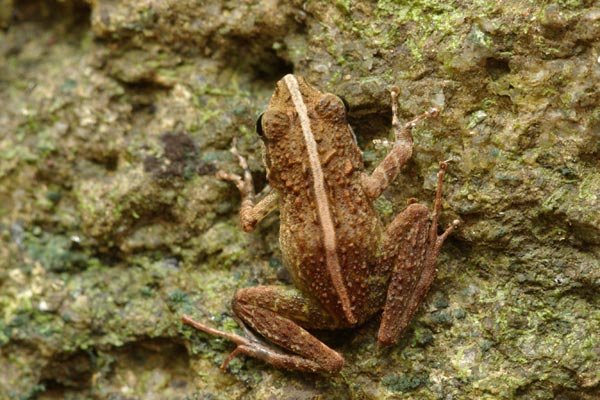
On our second night hike, we saw several of these impressive large brook-dwelling frogs. These reminded me of typical Rana frogs like R. hecksheri.
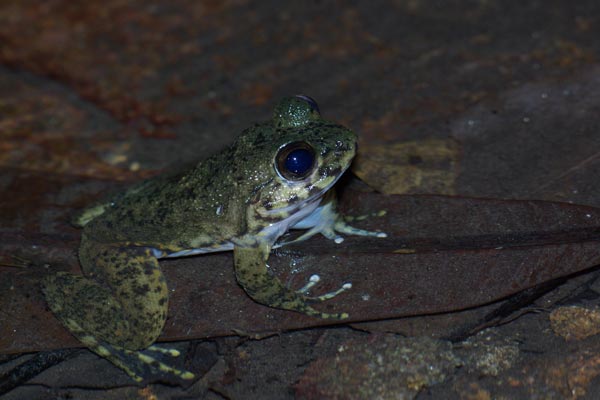
Here's a frog that I photographed during the day. I only got this one shot before it disappeared from sight. I think it might be Mantidactylus grandidieri as in the previous photo, but I'm not sure.
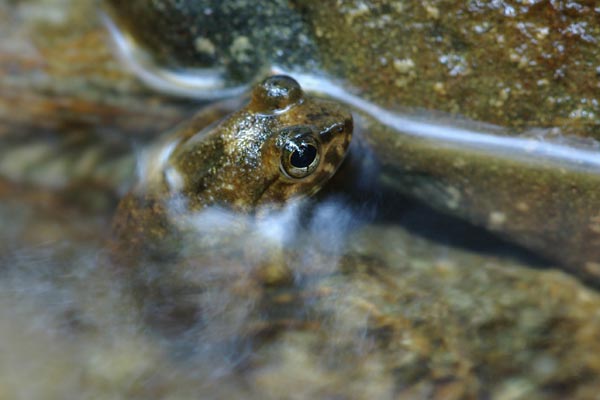
Mantidactylus guttulatus is another large brook-dwelling frog, distinguished in part by its very granular skin.
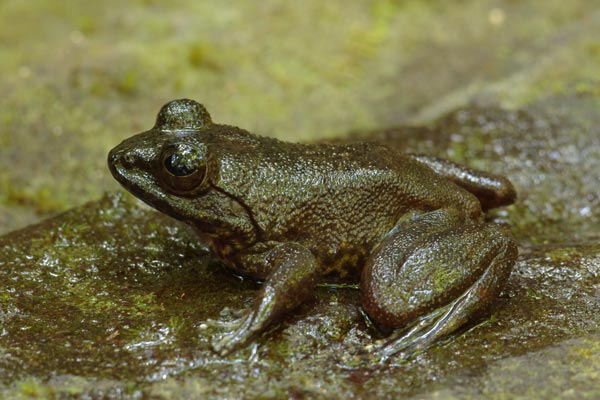
Here's another one that makes me reconsider the identity of one of the frogs I saw at Ranomafana. I'm much more confident that this one is Mantidactylus betsileanus than I am that the Ranomafana frog was this species.
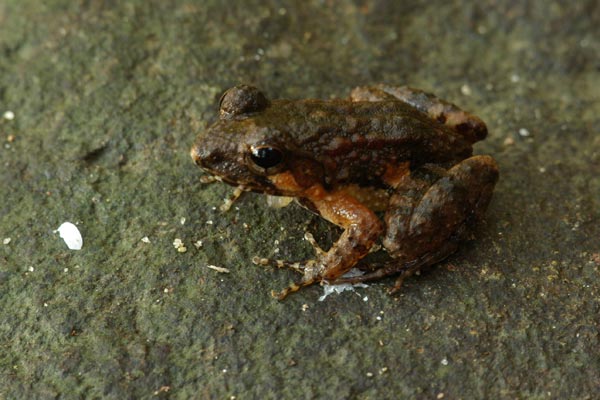
Very close to the previous frog I found this little guy. I initially thought it was a youngster of the same species, but after studying the photos I now think that it's a different, smaller species, M. biporus. Glaw & Vences mention that these two species are often found together.
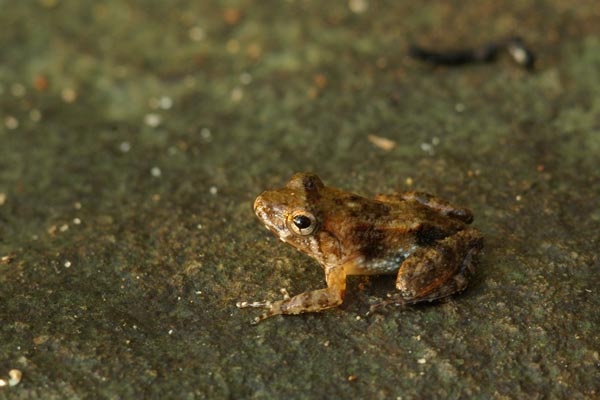
My sister's bathroom, as I mentioned earlier, housed a nice big snake. Our bathroom's counterpart was this large treefrog. At one point it was in the toilet bowl, but usually it was perched up high.
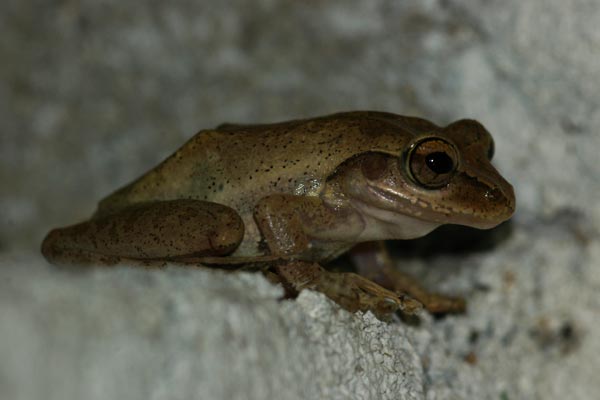
This appears to be a typical Mantidactylus luteus. I identified one of the Ranomafana frogs as this species also, and I still think that's right, though the colors are quite different. The ridges behind the head are pretty distinctive.
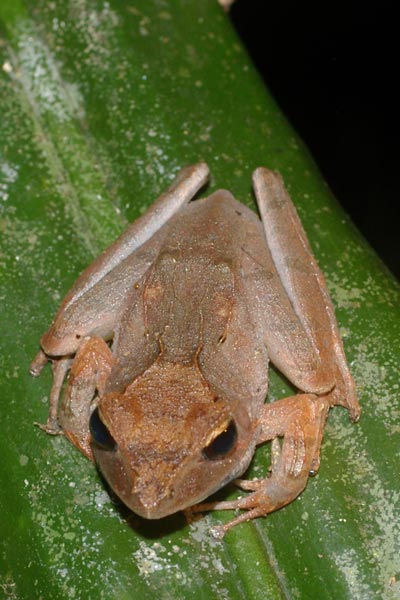
This next frog had incredible camouflage against the leaf litter, and was quite a fine jumper too. It would leap into some leaves and disappear simply by sitting still, until it felt disturbed enough for another prodigious leap. I thought its striking pattern would make it a cinch to identify, but when I pored through Glaw & Vences I didn't see any similar photos. However, it has the same ridges behind the head as the previous frog, so my best guess is that it's an interesting color morph of Mantidactylus luteus. I'd love to be wrong though -- this frog was so interesting that I think it deserves its own distinct species.
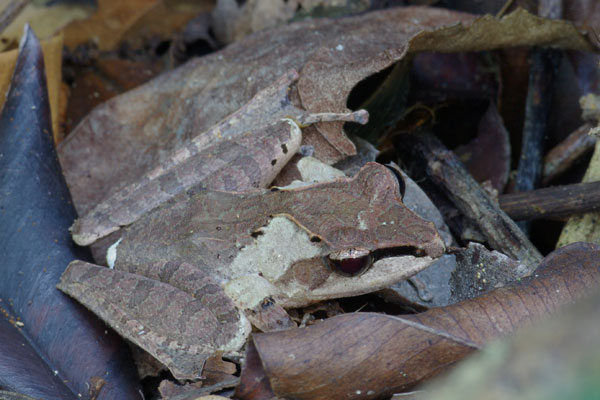
OK, this is the part of the post where we're clearly moving beyond the more ordinary sorts of frogs and into the oddities. Madagascar has the Mantella genus of day-active poison-skinned frogs that are the ecological equivalents of Latin America's poison dart frogs. At first glance, and probably 2nd and 3rd glance too, this next frog looks just like a Mantella. Ah, but it's not, it's yet another Mantidactylus, this time Mantidactylus albofrenatus. The only feature Glaw & Vences describe to tell them apart from nearly-identical Mantella is the white line that goes from the insertion of the forearm to the front of the eye. Notice that the white line curls upward a little from back to front, rather than staying parallel to the chin. There you have it, Mantidactylus. (This frog is also very similar to the Mantidactylus opiparis that we saw at Ranomafana, but it's a little smaller and has slightly different toes.)
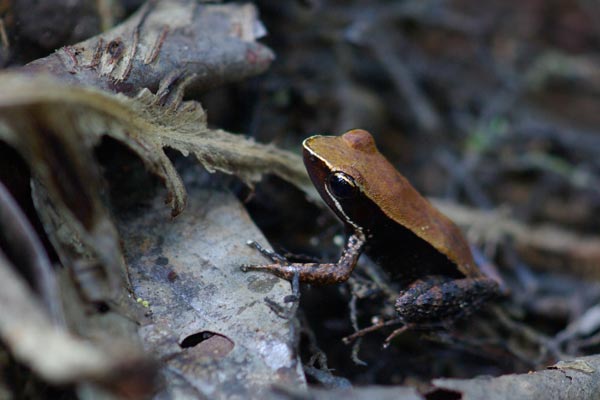
In the discussion of my earlier Ranomafana post I mentioned that we never did see any Mantella on this trip. Well, that's what I thought at the time, but now I think otherwise. I was sure that all the small brown-backed, dark-sided angular frogs we saw at Masoala were the same species until I studied the photos. Yet it turns out that some of them are just a little bit different. Note that the next one has somewhat different color, a thin mid-dorsal line, and a subtle dorsal pattern. But especially note that the light color extending forward from the insertion of the forearm does not curl upward in front of the eye, but instead just sort of fades into the chin color. If I'm to trust Glaw & Vences (and I have to, don't I?), that last trait identifies this frog as Mantella betsileo.
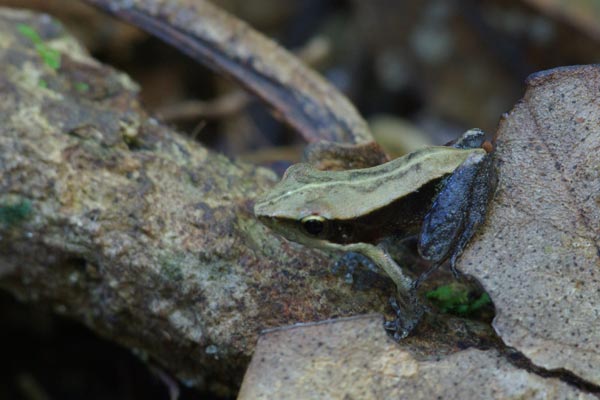
At Ranomafana we saw one green-backed Plethodontohyla notosticta on the forest floor by day. At Masoala we heard a few males calling loudly from tree-holes at night. I managed to get a couple of photos showing glimpses of this frog in its arboreal hideout:
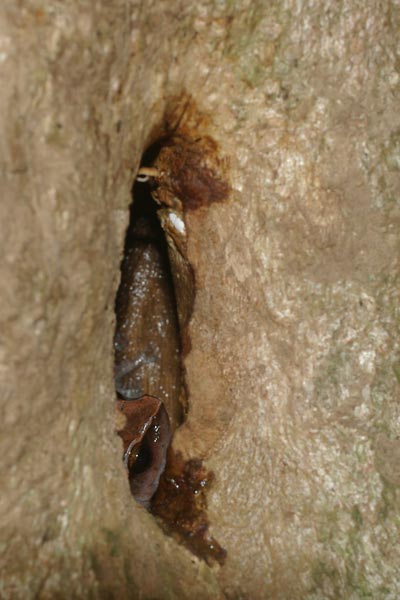
This next frog was just a miniscule little speck, perhaps a centimeter long. It was in a shallow stream in a very dark area of the forest and was nearly impossible to see. Thank goodness for my 200mm macro lens and tripod. I've tentatively identified this as Plethodontohyla minuta, though perhaps it could instead be some little Stumpffia species.
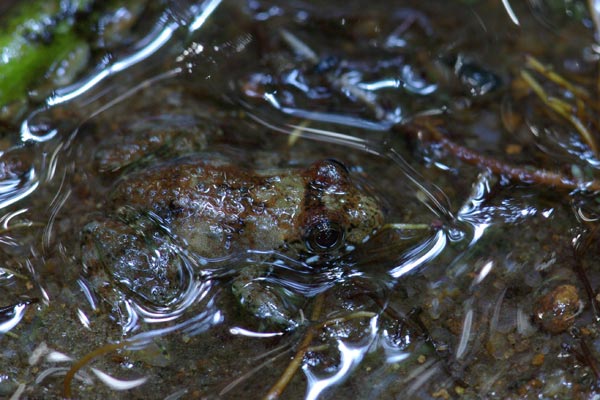
And here's yet another frog that throws doubt on my earlier identification of species from Ranomafana. I'm quite confident that this lovely frog is Mantidactylus asper; it looks exactly like a photograph of that species in Glaw & Vences. But I'm not so sure that the frog I identified as M. asper from Ranomafana is the same. However, this species is quite variable and I don't have any better guesses for the Ranomafana frog.
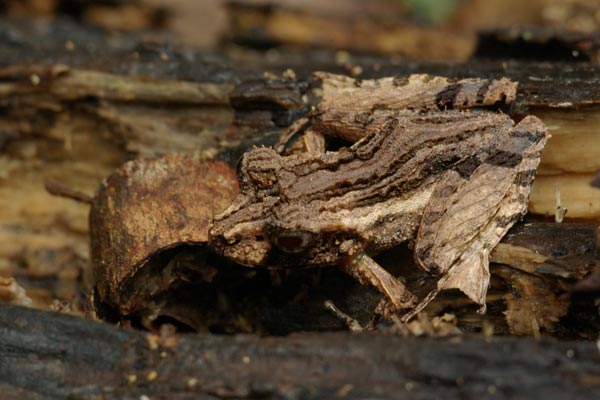
This pudgy little frog has a very distinctive shape that marks it as a Platypelis. I'm pretty sure that the species is P. tuberifera.
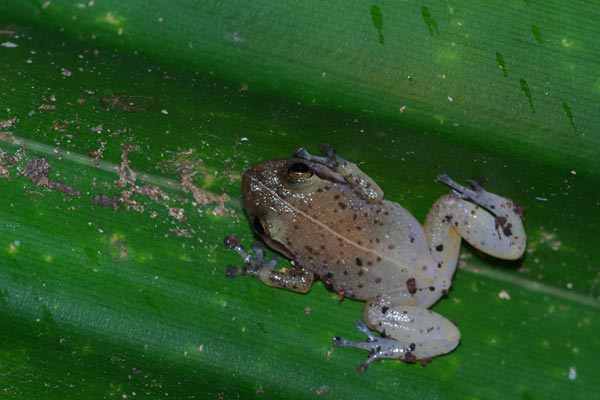
Finally, my two favorite Masoala frogs, and ones that the moof will be happy to see. This one had amazing camouflage against mossy rocks -- it had not only an exact mossy rock color, but even a mossy texture. You can see the mossy rocks in the waterfall photograph at the start of the frogs section of this post. This frog was about three feet away from that waterfall, lurking in the dark recesses of the boulders.
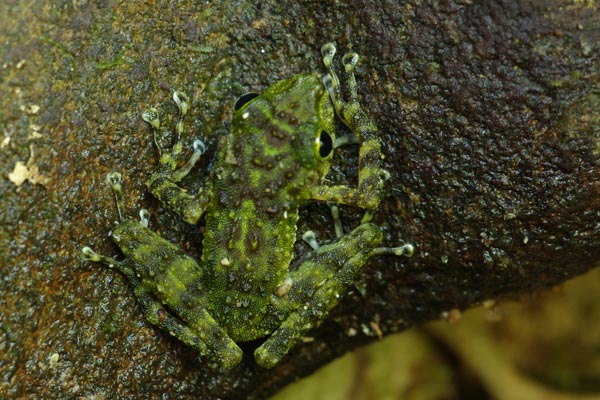
And to top even the amazing mossy-rock frog, here's the super-amazing lump-of-mud frog. It's hard to believe that this isn't a frog covered by a lump of mud, but it is in fact simply a frog, not covered by anything.
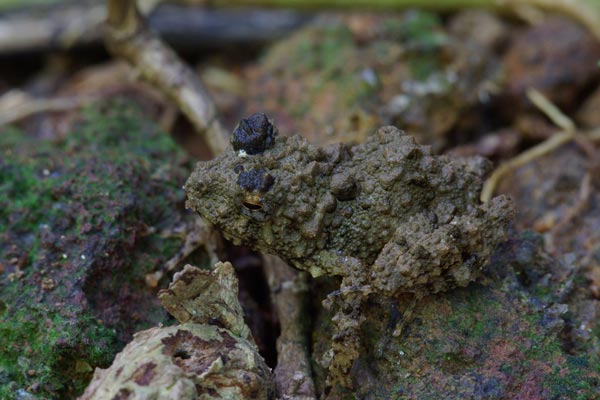
After the lump-of-mud frog, there's really nowhere to go but down. So I'll finish off with a few non-herps from Masoala.
These giant red millipedes were fairly common on the forest floor. I've tried to find their scientific name, but so far the only references I've come across call them "Madagascar Red Millipede" or "Madagascar Giant Millipede", which isn't really adding much information to the obvious.
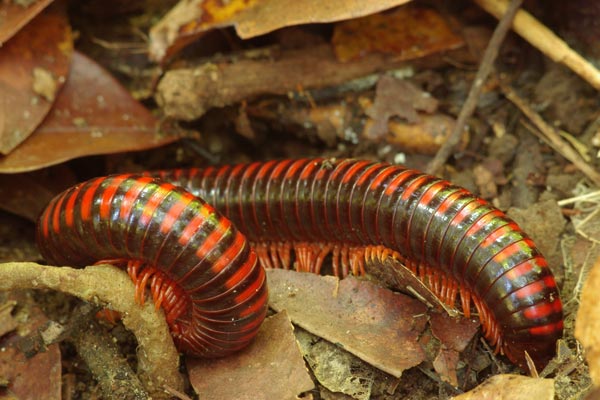
Here's the other interesting inhabitant of our hut's bathroom. This spider's legspan was a good seven inches or so. It spent part of the day on the wall above the shower, and part of the day hiding behind the small bathroom mirror with its front legs and mandibles sticking out a little. I discovered that if you brushed its leg gently with a toothpick it would instantly leap forward and bite the toothpick with enough force that it was jolted from my hand. I'm glad I didn't try that experiment with my finger.
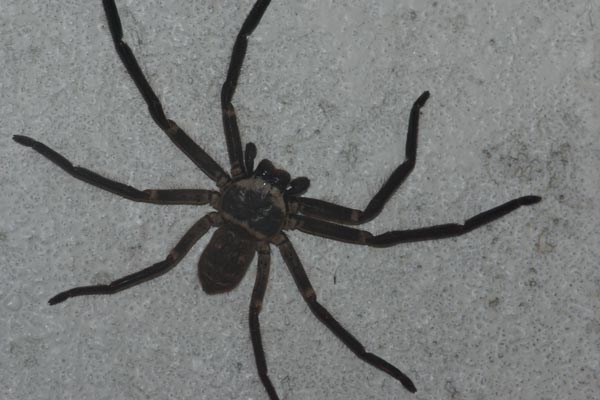
In the clearing near the dining area at Chez Arol there were several adorable little tenrecs nosing about. They are small and cute in any case, but this one was a little baby:
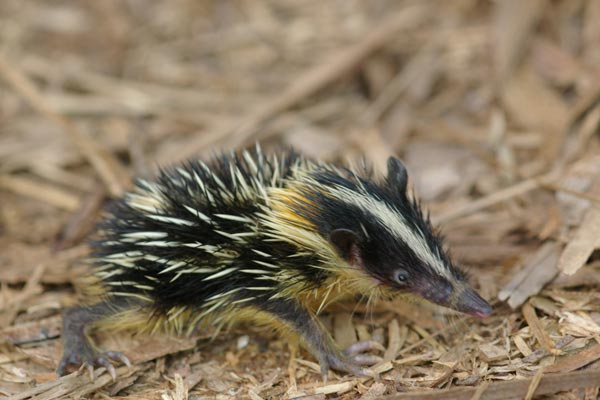
We saw several types of lemurs on our last night hike, but only two species during the day. The more typical species was the White-fronted Brown Lemur:
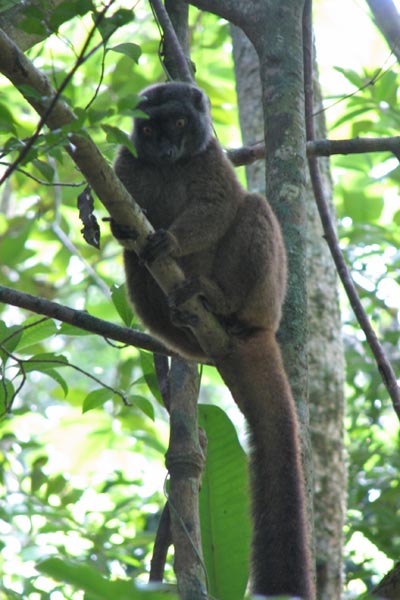
The lemur jewel of the Masoala Peninsula is the Red Ruffed Lemur, which lives only here. They were always high up in the trees and very difficult to photograph, but we got a few decent shots of them lounging around.
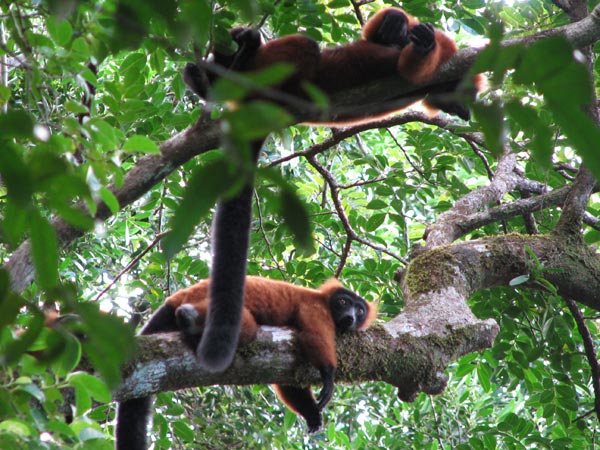
Next: Ankarana